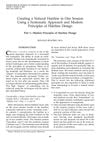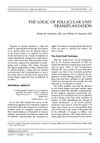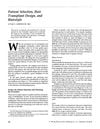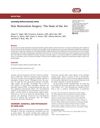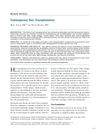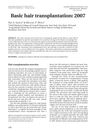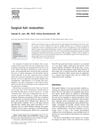Principles and Techniques Used to Create a Natural Hairline in Surgical Hair Restoration
May 2004
in “
Facial Plastic Surgery Clinics of North America
”
surgical hair restoration natural hairline follicular unit grafts FUs transition zone defined zone frontal tuft area one-hair FUs two-hair FUs three-hair FUs follicular pairing angle and direction of hair placement anterior border of the hairline triangular-like bridges micrografts hair transplant hair grafts hairline design hair density

TLDR Creating a natural-looking hairline in hair restoration surgery involves using follicular unit grafts, proper hair placement, and artistic skills to give the illusion of density.
In 2004, Ronald Shapiro, MD, outlined principles and techniques for creating a natural hairline in surgical hair restoration. The approach involved conceptualizing a larger, extended hairline region with a transition zone, a defined zone, and a frontal tuft area. The use of follicular unit grafts (FUs) was recommended over small slit minigrafts in all three areas. Approximately 600 to 900 FUs were needed in these zones during the first session to create the desired density. The author also suggested using one-hair FUs in the anterior portion of the transition zone, shifting to two-hair FUs towards the posterior aspect. Larger two- to three-hair FUs should be placed in the defined zone, with a greater proportion of three-hair FUs in the midline central portion. The technique of follicular pairing was also discussed. The author emphasized the importance of proper angle and direction of hair placement, and the careful placement of the anterior border of the hairline. The process also involved creating an initial framework of multiple triangular-like bridges, with each bridge containing approximately six to ten incisions. After this framework was established, multiple passes and artistic skills were used for refinement. About 100 to 300 grafts were usually saved for the end of the procedure to further fine-tune the hairline. The author emphasized the importance of not just using micrografts, but also proper selection and use of FUs combined with artistry and skill to create natural-appearing, soft hairlines while establishing the illusion of density.
